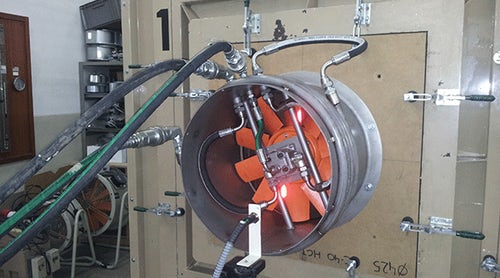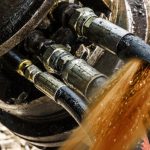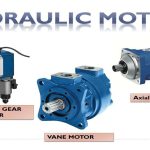Mobile power packs for hydraulics might be considered to be a long way off from the ventilation system that the Royal Navy of Australia has just installed. However, we like to be in the know and to keep you in the know, as much as possible, when it comes to all things hydraulic, in particular, if something catches our eye because it’s a bit different.
We’re not really geeks (or are we?), but there is also the fact that we find all the different uses of hydraulics really quite wondrous.
Let’s get back to the matter at hand; The Company that designed the hydraulic ventilation system are specialists in the marine industry. They work on a variety of different marine machines and hydraulic controls. Last year they worked on four military landing craft, to add ventilation systems to the engine rooms.
Although it may seem to be over the top to use hydraulics for a ventilation system, the company had their reasons. One was that NATO demand it as a requirement; in that it is essential that the fans used, can operate independently of the speed of the engine. The benefit of using hydraulics is that they are durable and deliver high power density.
A hydraulics gear motor is also considerably lighter than what an electric drive would be. With the vibration and high shock factor of a boat, when there is potentially shelling fire occurring during operations, the electric motor is more prone to failing.
The cooling fans are attached to the engine, to ensure that they start when the engine starts. If the engine isn’t running, then they don’t need to run. The result delivered by these ventilators, is as much as 17,000 square meters of air, being moved per hour from the rotating hydraulically powered blowers, rotating at 2900 revs per minute. To watch this in action must be real eye candy for a true hydraulic engineer.
What type of fork uses hydraulics?
The front suspension of modern motorcycles is a set of telescopic tubes that absorb impact from the road by moving within each other. They are comprised of two parallel hydraulic cylinders that act as shock absorbers; the first appearance of hydraulics to provide a smooth damping action was in 1935, on a BMW machine. The hydraulic cylinders are attached at the top to the steering bars, and to the centre of the wheel at the bottom; so is connected to the frame at two points. The entire assembly is called the front forks. Within the hydraulic cylinders is a coil, which provides much of the suspension action, surrounded by oil. The coil is under constant compression. The compression and lag are set according to pre-load settings when the machine is first sold, which allows the motorcycle to be ridden by almost any rider and in any style. Fine adjustments can be made to the tuning of the forks within the range where the internal coil is still under compression.
Motorcycle front forks come in two set ups, either the conventional type where the bottom portion of the fork assembly slides up over the fork tubes, or “upside down” (USD) forks, where it is the top portion that moves; the fork tubes are fixed at the bottom. There are benefits to both systems, but the USD forks are stiffer and give better handling at speed, so are often used on race bikes. They are more expensive than conventional forks but the benefits of better track handling make them the first choice for competitive riding. Race forks are also often manufactured with a built in coolant reservoir, which helps keep the oil cool under race conditions.
The oil used in the forks is different to the sort of oil used in the engine; the viscosity makes a big difference in the performance of the hydraulic forks and therefore the ride handling. Different riding conditions also affect the oil, as it becomes less viscous as the temperature increases. For this reason, a hydraulic fork oil of 5w may perform well and give responsive handling under normal road riding conditions, but used in the forks of a race bike it will heat up too quickly and perform badly; as it heats the suspension will become less responsive and feel spongy, so cornering will be affected negatively.
Road riding does not generate the same heat in the engine and body of the motorcycle as track racing, so although an oil of 10w to 12.5w may be used in the USD forks of a track bike, this weight would be very hard and unresponsive when used in a motorcycle that is used for commuting. The weight of the rider is a factor to consider when choosing the appropriate weight for a hydraulic oil, as heavier riders generate more downwards force on the forks and therefore require an oil of higher viscosity to give the same resulting performance. The speed at which the motorcycle travels when in a race situation also increases the downward force on the suspension; the higher the speed the more pressure is exerted.
Hydraulic shock absorbers are also found in the rear suspension of the motorcycle, but unlike the front suspension, which has a small range of setting adjustments, the rear hydraulic shock system has many more settings that can be adjusted. The coil is also usually external to the hydraulic component, instead of housed inside the fork assembly. Also unlike the front forks, the rear shocks do not take the brunt of the impact and force of the road, so are less likely to make a big difference to the comfort of the ride. When taking a pillion passenger, however, it is vital to adjust the rear hydraulic suspension to accommodate the extra weight over the back wheel. The front fork settings are not affected as much by the extra weight and can be left alone unless the passenger is exceptionally heavy.


